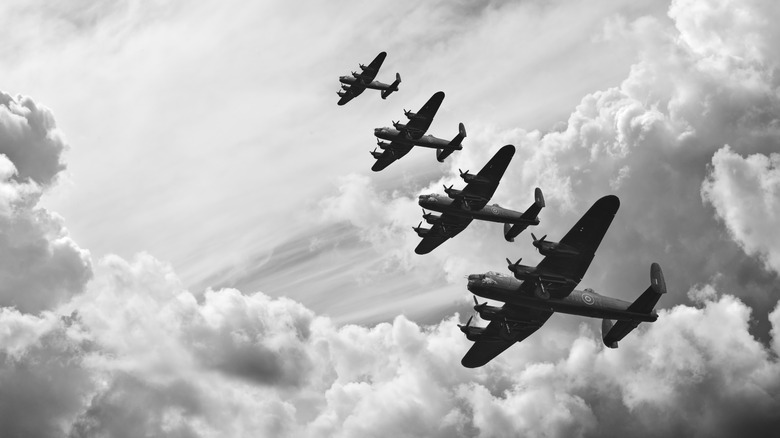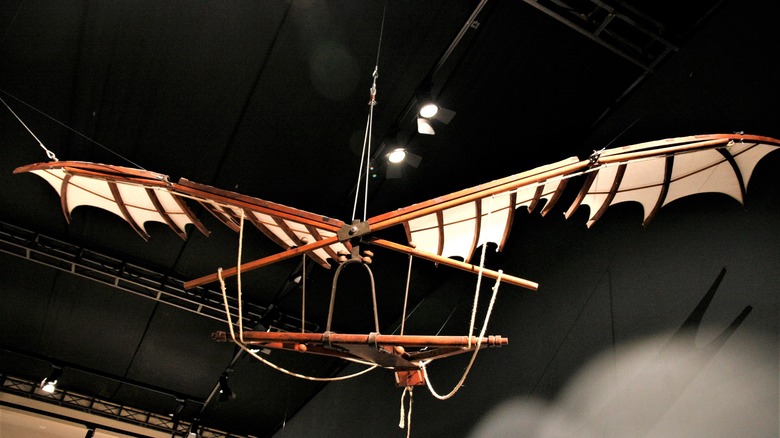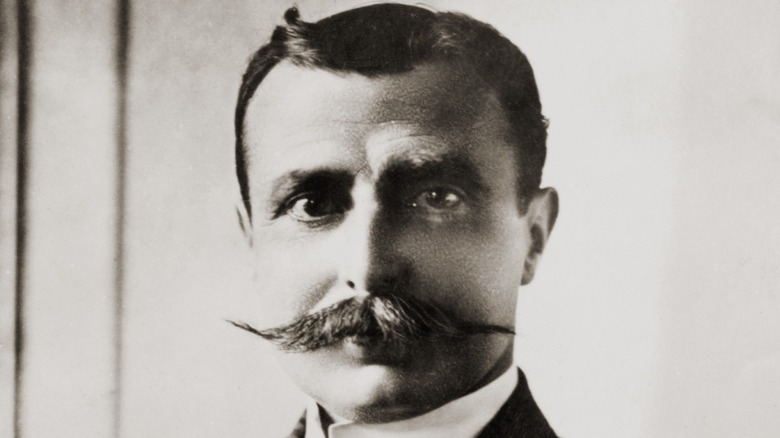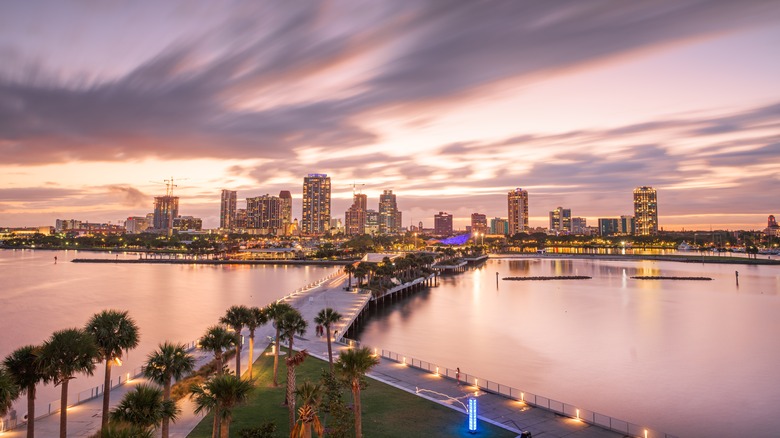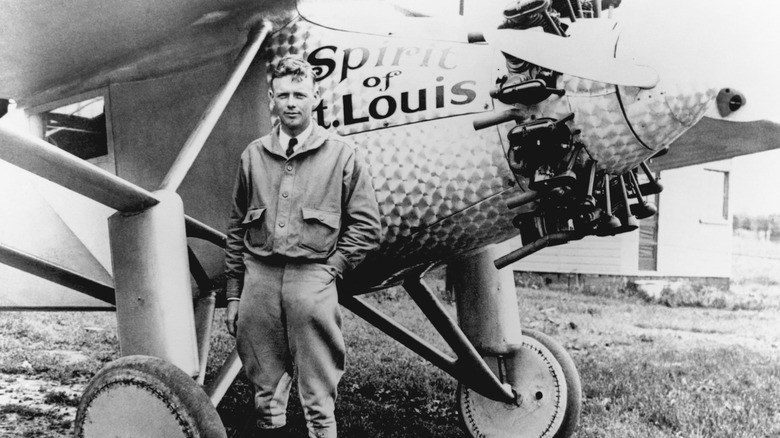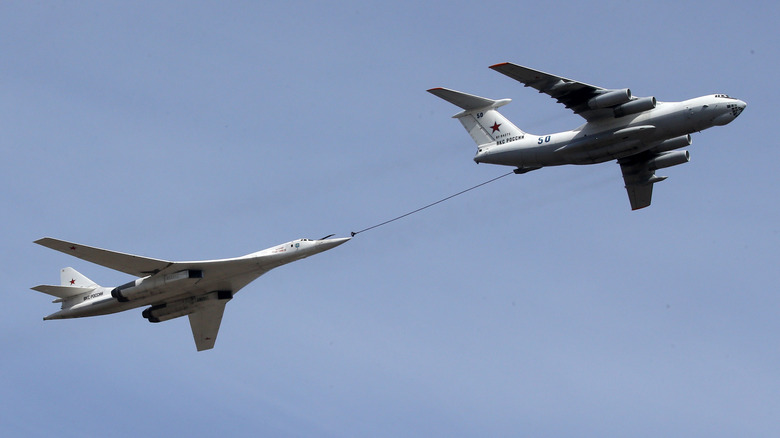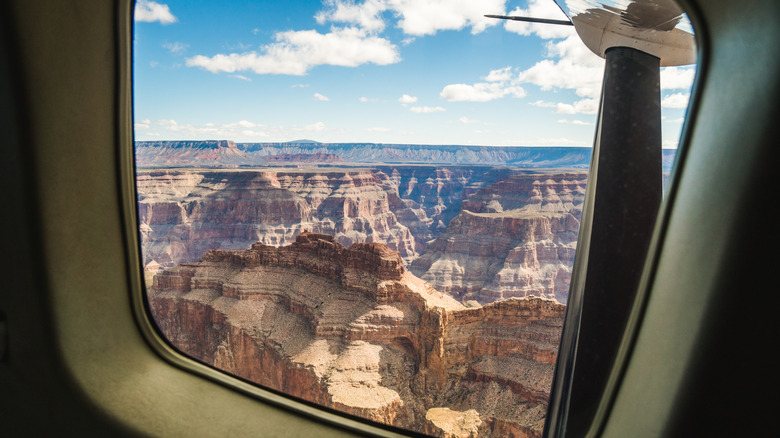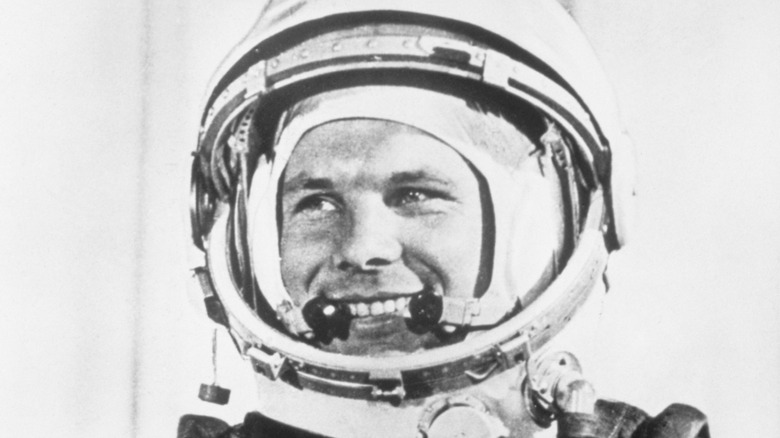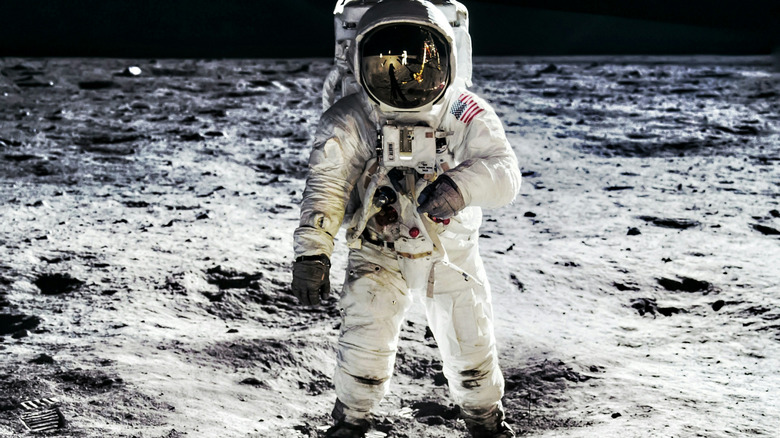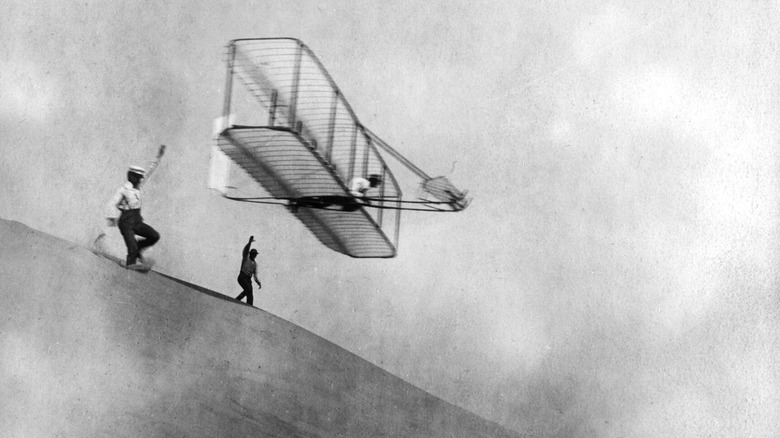Top 10 Moments In Aviation History That Changed Flight Forever
In modern times, flying may not seem all that remarkable. The magic of seeing a machine in the sky has faded as it became a common method of transit. However, flight's journey from idea to a part of everyday practice is anything but unremarkable. Many may think of the Wright brothers, Orville and Wilbur Wright, and their famous lift-off in North Carolina in December 1903 when asked to think about the early stages of flying. But the idea of flight began long before the Wright brothers made their daring venture. As early as the 1400s, Leonardo da Vinci was conjuring up ideas of aviation and publishing them with his works.
From a dream to an outstanding accomplishment to the beginnings of military aviation in 1911 to commercial flights and private jets, the long history of flight has generated more styles of transport than some could have ever believed. Some moments along the way have been so grand on the scale of aviation history that they altered flight forever in one way or another.
10. Non-powered flying
You won't get very far flying without some sort of engine or power source doing some heavy lifting no matter what type of aviation machine you're boarding. However, non-powered flying was one of the first steps to reaching the flight style we've grown accustomed to today.
In 1485, Leonardo da Vinci illustrated his idea for the first ornithopter. An ornithopter is a gliding machine with wings that flap up and down like those of a bird. His ornithopter never came to fruition in his lifetime, but a few centuries later, in 1901, French engineer Louis Bleriot constructed his own.
Da Vinci's ornithopter might seem simple now, but it helped inspire the modern-day helicopter. Ornithopters and gliders have long been used as models for flight experimentation. The Wright brothers used gliders to test different structural shapes for flying. Studying these machines helped them create a safe and efficient plane for themselves to eventually take to the skies.
9. Louis Bleriot's flight across the English Channel
Throughout history, there have been many firsts, and, for a time, while humans were still getting the hang of things, those firsts would include the longest flights. On July 25, 1909, French engineer Louis Bleriot achieved one of those longest flights when he became the first-ever pilot to successfully fly across the English Channel.
From one side of the Channel to the other was 22 miles and Bleriot not only crossed it, he made the flight in a plane that he designed, the Bleriot XI. After his feat, interest in longer flights grew substantially and Bleriot received orders from all sorts of aviation enthusiasts looking to own and operate their own XI plane.
The Bleriot XI ended up playing a huge role in providing aviation assistance in World War I. The plane was used to train new military pilots even after new aircraft technology surpassed it. The Bleriot helped open the world to the possibility of longer air travel and its usefulness and convenience.
8. The first commercial flight in 1914 across Tampa Bay
Depending on who you ask, flying can be a fun way to travel. For a lot of people, it's just another part of their regular commute. Commercial flying has benefitted millions by allowing people to get to their destinations much faster than they would have if they drove or used other means of transportation. Flying helps people stay closer to loved ones, careers, and free time all while saving immense amounts of time.
Commercial flying hasn't actually been around for a long time, with the first-ever passenger flight happening on January 1, 1914. The flight took passengers 17 miles from St. Petersburg Florida to Tampa, Florida. The flight was a considerable improvement in travel time as taking a boat took two hours, a train took 12 hours, and driving around the bay took twenty hours. By plane, passengers arrived in Tampa in just twenty minutes. The great success of this flight got the public and corporations excited about the convenience of air travel and helped make the experience of flying an attainable one for the everyday person.
7. Charles A. Lindbergh flies across the Atlantic Ocean
Even with modern flight, the Atlantic Ocean is massive to traverse. The average person wouldn't likely be caught trying to sail or fly across it in their own self-made plane or boat. Crossing the Atlantic is typically left to commercial airlines and large ships. That doesn't mean people haven't done it though. The first person to do so, was Charles A. Lindbergh when he flew from Long Island, New York, to Paris, France, in May of1927.
The flight was inspired in 1919 by a New York hotel owner, Raymond Orteig, who offered up 25,000 dollars to whoever completed the flight from Long Island to Paris. Lindbergh was able to find investors from St. Louis, Missouri, to back the construction of his plane which he then appropriately called, The Spirit of St. Louis.
The flight itself wasn't an easy feat, even with a newly built, top-notch aircraft. It took Lindbergh 33 hours and 30 minutes to fly the 3,600 miles from one end of the Atlantic to the other. His flight departed at 7:52 a.m. on May 20, 1927 from New York, and arrived in Paris at 10:22 pm on Saturday, May 21. His success ignited what was called the "Lindbergh Boom," when it revealed the real potential for long-distance flying. This revelation caused aviation stocks to rise and the American aviation industry took off as people realized what could be accomplished through flying.
6. The first mid-air refueling
Like most other vehicles that are powered either by electricity or fuel, planes have limits to the range they can travel before they need refueling. This means that longer flights need to be planned around the amount of fuel an aircraft has available. In October 1922, two American lieutenants, John A. Macready and Oakley G. Kelley, set a record for remaining in air for a staggering 35 hours, 18 minutes, and 30 seconds. It was an impressive length of time, but it could have been even longer if the pair didn't need to refuel.
This prompted a new strategy and on June 27, 1923, the first mid-air refueling took place thanks to developments from Rockwell Field in San Diego, California. The fuel was passed successfully by hose from one DH-4B to another. The practice was continuously tested, and on October 25, 1923, there was a successful flight from the Canadian border to the Mexican border without landing by way of three mid-air refueling sessions.
The ability to refuel while staying in the air not only gives pilots more longevity to get from one place to another, but it significantly increases flight safety by preventing many fuel-related emergency landings or crashes.
5. Plane collision over the Grand Canyon in 1956
While many people experience anxiety prior to departing on a flight, flying is widely considered one of the safest ways to travel due in part to the extensive regulations put in place. The technological advancements in air travel safety have made it incredibly efficient and consistent. However, some of these advancements were the result of tragedy.
June 30, 1956, two planes, a Lockheed L-1049 Super Constellation, and a Douglas DC-7 collided over the Grand Canyon resulting in the deaths of more than 100 people. The accident was the result of a deadly blend of poor visibility and miscommunication. A storm in the area that day caused both pilots to be alerted of the other plane's presence. They were approved to fly 1,000 feet above the clouds, which put the Lockheed L-1049 at the exact same height and the exact same path as the Douglas DC-7.
The devastating crash led the U.S. Congress to pass the Federal Aviation Act. This meant the development of an air traffic control system for all commercial and military flights that would actively work to prevent any collisions long before they're even a possibility.
4. The first human to enter outer space
For the most part, by the 1960s, humans had conquered the skies with aviation advancements and the space race was well underway. On April 12, 1961, history was made when the Soviet Union successfully sent the first human into space. Yuri Gagarin became a sensation when his 108-minute flight in the Vostok 1, which circled the Earth.
Reaching 203 miles above Earth's surface, Gagarin left the atmosphere carrying 10 days of food and supplies. He never lost consciousness, which allowed him to eject himself from his Vostok 1, and parachute to the ground when necessary as his spaceship wasn't equipped with landing gear or engines.
Gagarin's venture into the unknown made him an instant icon upon his return Earthside. Not all was lost of the Vostok 1 either and pieces of it can be seen on display at the RKK Energiya museum. While making the journey to space was a priority for multiple countries, the first time a person successfully did it kicked off space exploration for the whole globe.
3. The first commercial flight hijacking
Not all moments in aviation history are positive. Some of them are a lot more morbid to look back on, like the first-ever commercial flight hijacking. It was meant to be a quick flight from Hong Kong to the Portuguese colony of Macao. The short path was an easy target for those looking for gold and other valuables, adding to the flight's risk.
On July 16, 1948, the plane, known as "Miss Macao," and its 23 passengers failed to land at their destination after what should have been a 20-minute flight. The plane was hijacked by four Chinese men with the intent to hold several of the flight's wealthy passengers for ransom. Unfortunately, after a battle for control, both pilots were shot and killed, causing the plane to plummet into the water below.
Only one person managed to survive — Huang Yu, who also happened to be one of the hijackers. The group came well-prepared to take over the plane and even made sure to hide their firearms inside their pant legs. This incident served as a tragic eye-opener as far as flight security measures go. It opened the public's eyes to the very real possibility of plane hijackings, which before had never been an issue. In modern times, the hijackers wouldn't have been able to get even close to a plane thanks to rigorous security.
2. The Apollo 11 Mission
After the first man made it into outer space in 1961, the doors for space exploration only opened wider for those seeking to understand the universe. Just eight years later in 1969, NASA sent the Apollo 11 mission into space with three men on board, Neil Armstrong, Edwin "Buzz" Aldrin, and Michael Collins.
The goal was to land astronauts on the moon, and the Apollo 11 mission achieved this when Armstrong and Aldrin took those first steps onto the Earth's moon on July 20, 1969. Collins remained in orbit around it. All three men did experiments in the area and took photographs of what they saw.
While the world watched, the astronauts in Apollo 11 made history and Neil Armstrong became the first man to walk on the moon. The men left an American flag on the moon before wrapping up their mission and safely returning to Earth on July 24, 1969, as heroes. The day they landed on the moon not only marks one of the biggest days in history for humankind but it blew the doors off space exploration and technology.
1. The Wright brothers take-off in North Carolina
There are a lot of historic moments throughout the long and winding path of aviation advancements. However, two people have a name that lives on in the minds of nearly everyone interested in flight, Wilbur and Orville, the Wright Brothers.
After having an interest in flying for most of their lives, in 1899 the bicyicle repairing Wright brothers began seriously working on an experimental flying machine. On December 17, 1903, they took what they called the Wright Flyer to a beach near Kitty Hawk, North Carolina, and made liftoff for 12 seconds in their powered, piloted airplane. The first brother to leave the ground was Orville, though as the morning went on, the two switched back and forth with each take-off.
The Wright Flyer itself was eventually damaged when aggressive wind picked up and blew it around the Kitty Hawk beach, but there was no question about what happened that day. The Wright brothers had flown a powered aircraft. The jump from non-powered to powered flight was possible, and in their Wright Flyer, the Wright brothers had proved it. Making this a moment in aviation history that changed flight forever.
